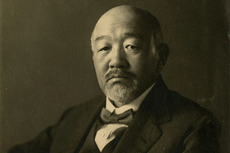Maria Telkes: Who was the ‘Sun Queen’ biophysicist who championed solar energy?
Visionary Hungarian-American scientist foresaw the potential of renewable power

Pioneering Hungarian-American physicist Maria Telkes, an early champion of the possibilities of solar energy, is being remembered on the 122nd anniversary of her birth and the 70th anniversary of her winning the inaugural Society of Women Engineers Achievement Award on 12 December 1952.
Dr Telkes was born in Budapest, Hungary, on this date in 1900 and studied physical chemistry at the city’s Eotvos Lorand University from 1920, earning her doctorate in 1924.
After graduating, she emigrated to the US where she had a relative based at the Hungarian consul in Cleveland, Ohio, and took a sequence of research roles, initially working as a biophysicist investigating brain waves at the Cleveland Clinic Foundation – where she co-wrote the book Phenomenon of Life with her mentor, George Washington Crile – and then for Westinghouse studying the conversion of heat into electricity.
Granted American citizenship in 1937, she then took a job with the Massachusetts Institute of Technology (MIT) studying solar energy in 1939.
After the US entered the Second World War following the bombing of Pearl Harbour, Washington appointed Telkes as a civilian advisor to the Office of Scientific Research and Development, in which role she developed a solar-powered desalination machine, designed to provide soldiers and civilians with clean drinking water distilled from seawater in hostile and arid environments, not least the Pacific.
After the war, Dr Telkes turned her attention towards developing solar-powered homes, realising that storing thermal energy would be a pressing problem and believing molten salts could provide the solution.
However, when a design centered around Glauber’s salt (sodium sulphate) failed, Dr Telkes was blamed by Hoyt C Hottel, chairman of MIT’s solar energy fund, and removed from the project.
Persisting independently, she worked on the Dover Sun House in partnership with architect Elearnor Raymond and philanthropist Amelia Peabody, a new model home that relied on the sun melting Glauber’s salt behind glass by warming the air surrounding it, a process that in turn trapped the heat and released it as it cooled so that it could be evenly distributed by concealed electric fans.
Initially successful and attracting acclaim from Popular Science magazine and a visiting public, the project later ran into problems and an unfavourable report into the running of MIT’s solar department duly saw Dr Telkes drummed out of the institution in 1953.

Undeterred, she relocated to New York University’s College of Engineering and developed a solar-powered oven for use in remote locations with the support of a Ford Foundation grant.
After several years working in industry in the 1960s for Curtiss-Wright Company, Cryo-Therm and Melpar, Dr Telkes returned to academia and the development of domestic solar power, first at the University of Delaware’s Institute of Energy Conversion at the decade’s end, where she worked on photovoltaic cells, and later worked for the US Department of Energy.
Speaking at the first International Conference of Women Engineers and Scientists in New York in 1964, Maria Telkes told her audience: “It is the things supposed to be impossible that interest me. I like to do things they say cannot be done.”
A true visionary with more than 20 patents to her name, she passed away in her native Budapest on 2 December 1995, just 10 days shy of her 95 birthday.
She was featured in the Google Doodle on 12 December 2022.
Read more on solar panels
Join our commenting forum
Join thought-provoking conversations, follow other Independent readers and see their replies
Comments


Bookmark popover
Removed from bookmarks